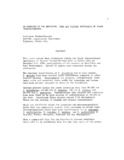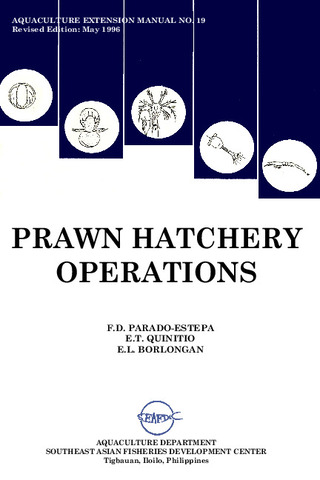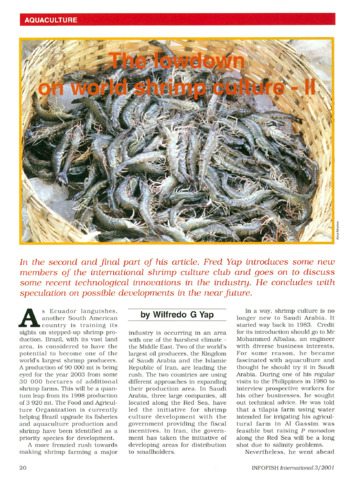Runt-deformity syndrome in cultured giant tiger prawn Penaeus monodon
Share
Abstract
A total of 24 morphological abnormalities associated with the Runt-Deformity Syndrome (RDS) is reported for the first time in 17- to 18-mo old F3 generation Penaeus monodon (>40 mm CL) belonging to three breeding families. Although diagnosed as positive for the infectious hypodermal and hematopoietic necrosis virus (IHHNV), the shrimp appeared normal at 9 to 10 mo when they were procured from a commercial facility in Antique, central Philippines, in September 1996. The abnormalities affected either specific shrimp organs and appendages (e.g., rostrum, antennae, uropods) or the whole body (e.g., shell color and hardness). A two-way analysis of variance was used to evaluate differences in the morphometric characters rostral length (RL), carapace length (CL), abdominal length (AL), body length (BL), total length (TL), carapace width (CW), 1st abdominal segment width (AS1W), and body weight (BW) and the morphometric ratios RL:CL, CL:AL, and CW:AS1W by sex and stock (3 families and wild controls). Female P. monodon had significantly larger CL, AL, BL, TL, CW, and BW than males, regardless of stock. Wild females had longer BL and TL than cultured ones, whereas wild male shrimp had shorter CL, CW, and BW than cultured male P. monodon. Cultured shrimp had significantly higher CL:AL and CW:AS1W ratios and lower RL:CL ratio compared to wild P. monodon. The shorter and narrower abdomen relative to the carapace gave the shrimp a “runted” or dwarf appearance characteristic of RDS earlier described in Litopenaeus vannamei with IHHNV. Confirmed by parallel studies, IHHNV infection of the cultured P. monodon may account for their cuticular deformities, slower growth, and smaller sizes. The appearance of deformities in older (and bigger) P. monodon suggests that RDS expression is dependent on age and size. Examination for external abnormalities and evaluation of the three morphometric ratios may complement existing screening protocols for diseases and growth rates in shrimp breeding programs. Cultured giant tiger prawn also had lower sperm count, greater proportion of dead and abnormal sperm, and lower incidence of mating (absence of sperm in thelyca) compared to wild P. monodon.
Suggested Citation
Primavera, J., & Quinitio, E. T. (2000). Runt-deformity syndrome in cultured giant tiger prawn Penaeus monodon. Journal of Crustacean Biology , 20(4), 796-802. https://doi.org/10.1651/0278-0372(2000)020[0796:RDSICG]2.0.CO;2
Subject
Taxonomic term
Collections
- AQD Journal Articles [1249]
Related items
Showing items related by title, author, creator and subject.
-
An overview of the nutrition, feed and feeding techniques of prawn penaeid/shrimps
Piedad-Pascual, Felicitas (Philippine Council for Aquatic and Marine Research and Development, 1989)This paper echoes what transpired during the first International Conference of Penaeid Prawns/Shrimps held in Iloilo City in December 4-7, 1984, particularly on the Nutrition nd Feed Development. Around 25 papers were ... -
Prawn hatchery operations
Parado-Estepa, Fe D.; Quinitio, Emilia T.; Borlongan, Emeterio L. (Aquaculture Department, Southeast Asian Fisheries Development Center, 1996-05)The manual, an updated version of the 1984 SEAFDEC/AQD manual, presents the underlying principles and step-by-step instructions of prawn larval and post-larval rearing. The techniques described are not only applicable to ... -
The lowdown on world shrimp culture - II
Yap, Wilfredo G. (INFOFISH, 2001)This paper introduces some new members of the international shrimp culture club and goes on to discuss some recent technological innovations in the industry, particularly the polyculture of tilapia (mainly Oreochromis ...




